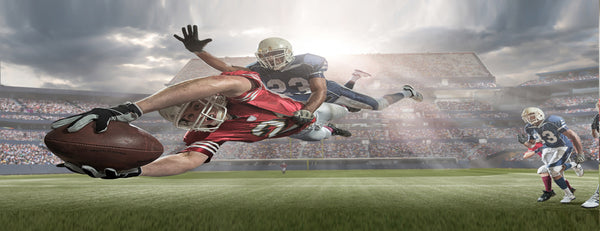The future Of Athletic Shoes And Performance In Sports
by Pharaoh Athletics LLC. on November 09, 2021

Can athletic shoes help athletes play better?
According to a 2013 article athletic shoes may possibly hold the key to the holy grail for reducing lower extremity injuries. Written by Feng Wei, PhD, and Eric G. Meyer, PhD, the article states more than a third of injuries are reported in non-contact situations, such as a rapid change in direction or with a combination of high compressive load and twist during a jump landing. Numerous studies have investigated the role of the shoe-surface interface and it is generally believed to be one of the primary contributors to non-contact injury, especially in football. With regard to my own research, I believe that shoes have a large impact on the effects of an athletes performance.
For example, how is it possible to run consistent at full speed and slow down without damaging or making small tears in the tendons in the knees and feet. Just like anything else the more pressure or stress the easier it can potentially break down. The article then goes on to say that your football cleats literally affect how prone to injury you may encounter due to the size of the cleats (too large), and the stiffness of the upper material. So, in laymen terms depending on the brand of the shoe an athlete may have a higher chance of injury based on the design of the football cleat.
Why shoe design matters?
Most grass, and turf related sports are played with forward motion movement. Football, rugby, and soccer are the most popular sports played around the world design for continuous forward motion. Running forwards unfortunately has a serious flaw with injury because eventually the player will have to slow down. The NFL realizes that it’s important to highlight the effectiveness of football cleats depending on the brand and design of the cleat. The type of shoe (football cleat) you wear reflects in how prone you may be to injury during practice or in a game. According to lermagazine.com, by Will Carroll states. There are two injury-related trends that are noticeable right now in the National Football League (NFL). The number of foot and ankle injuries⎯Achilles tendon tears, ankle sprains, and various maladies of the foot, especially the mid-foot have increased greatly over the last decade. And the amount of research the NFL is putting into solving this problem remains troubling flat.
As with most sports, the NFL players themselves have gotten bigger, stronger, and faster, in combination rather than isolation. A bigger man running faster has greater forces that he must dissipate. Even as the muscles higher up the kinetic chain are getting bigger, feet and ankles are essentially left with the anatomic gifts of a player’s genetics. And, while advances in the design of shoes and cleats have led to exponentially better performance, it’s clear that one thing the expensive shoes aren’t doing is reducing foot and ankle injury rates. So, the underlying question would be why haven’t shoes improved for reducing foot and ankle injuries?
Athletes train hard on and off the field to make sure they are ready to play for game day. The competition to compete with thousands of other player who’s work ethic is just as hard or even harder, any advantage a player can get over there opponent will result with a player making a crucial play to win or possibly being replaced by someone who could. The margin of error for athletes to compete and play at a high level is critical. Athletes need a better option to compete in sports where the shoe plays a major role for an additional advantage athletes can have over an opponent.
FOOTBALL

SOCCER

TENNIS

BASEBALL

BASKETBALL






